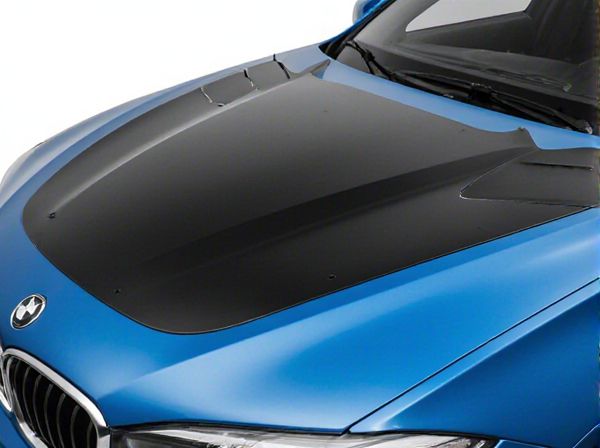
Photo illustration: Hood Shield vs No Hood Shield
A hood shield provides essential protection by deflecting wind, debris, and insects from your windshield, enhancing visibility and driving safety. Without a hood shield, your vehicle's front end is more exposed to chips and scratches, potentially increasing maintenance costs. Choosing a hood shield helps preserve your car's exterior while improving your overall driving experience.
Table of Comparison
| Feature | Hood Shield | No Hood Shield |
|---|---|---|
| Protection | Guards against stone chips, bugs, and debris | Exposed to damage from road debris and insects |
| Aerodynamics | Improves airflow, reducing wind noise | Standard airflow, possible increased wind noise |
| Vehicle Appearance | Adds a sleek, customized look | Maintains factory look without additions |
| Installation | Easy, bolt-on installation | No installation required |
| Cost | Additional expense ($50-$150) | None |
Introduction to Hood Shields: Purpose and Function
Hood shields, also known as bug deflectors, protect vehicle hoods from debris, insects, and small rocks, preserving paint and reducing damage. They redirect airflow to minimize windshield contamination and improve driving visibility. Without a hood shield, vehicles are more vulnerable to chips, scratches, and insect buildup, necessitating frequent cleaning and repairs.
Benefits of Installing a Hood Shield
Installing a hood shield protects your vehicle's paint and windshield from road debris, bugs, and small stones, reducing the risk of chips and scratches. It improves aerodynamics by redirecting airflow, which helps in minimizing grime buildup on the windshield. The added shield also enhances the overall appearance of the car, combining functional protection with a sleek aesthetic.
Drawbacks of Using a Hood Shield
Using a hood shield can reduce airflow to the engine, potentially causing higher under-hood temperatures and increased wear on components. It may also obstruct the driver's visibility, leading to safety concerns during driving. In some cases, the additional weight of a hood shield can affect the vehicle's aerodynamics and fuel efficiency.
Performance and Aerodynamics: With vs. Without Hood Shield
A hood shield improves vehicle aerodynamics by redirecting airflow over the windshield, reducing drag and wind noise for enhanced performance at higher speeds. Without a hood shield, air directly impacts the hood and windshield, potentially increasing drag and decreasing fuel efficiency. The presence of a hood shield also protects the hood surface from debris, which may indirectly contribute to maintaining optimal aerodynamics.
Impact on Vehicle Appearance and Style
Hood shields enhance a vehicle's appearance by adding a sleek, aerodynamic profile that reduces bug splatter and protects the paint from rock chips, preserving the vehicle's glossy finish. Without a hood shield, the hood is fully exposed to road debris, which can lead to visible dents, scratches, and a worn paint job that detracts from the vehicle's overall style. Choosing a hood shield contributes to a well-maintained, polished aesthetic, reinforcing both the look and long-term value of the car.
Protection from Debris: Hood Shield Efficiency
A hood shield significantly enhances protection from debris by deflecting stones, bugs, and road grime away from the windshield and hood surface, minimizing damage and maintaining visibility. Without a hood shield, the vehicle's front end is more exposed to impacts from debris, which can cause chips, scratches, and paint deterioration. Hood shields made from durable materials like acrylic or polycarbonate offer superior resistance to impact and weather conditions, improving overall hood protection efficiency.
Maintenance and Cleaning Considerations
Hood shields reduce the accumulation of road debris and insects on the windshield, decreasing the frequency of cleaning needed compared to vehicles without shields. Vehicles without hood shields require more regular maintenance to clear dirt and grime that collect directly on the paint and glass surfaces. Hood shields also protect the paint from minor abrasions, extending the longevity of the vehicle's exterior finish.
Cost Comparison: Hood Shield vs. No Hood Shield
Hood shields typically add an initial cost ranging from $100 to $300, depending on materials and vehicle compatibility, while no hood shield eliminates this expense altogether. Maintenance costs for hood shields include periodic cleaning and potential replacement due to wear or damage, which may average $20 to $50 annually, versus minimal upkeep costs for vehicles without shields. Overall, the cost comparison favors no hood shield for budget-conscious owners but acknowledges added protection benefits and potential long-term savings on paint and hood damage with a hood shield.
Customer Reviews and Real-World Experiences
Customer reviews consistently highlight that hood shields provide effective protection against road debris and bug splatter, enhancing vehicle durability and maintaining windshield clarity. Real-world experiences reveal that vehicles equipped with hood shields report fewer paint chips and a cleaner hood surface compared to those without, contributing to lower maintenance costs. However, some users note slight wind noise and aesthetic preference variability, emphasizing the importance of choosing high-quality, aerodynamic designs.
Final Verdict: Choosing the Best Option for Your Vehicle
Hood shields offer effective protection against debris, insects, and minor road damage, making them an excellent choice for drivers seeking to preserve their vehicle's hood and windshield condition. Vehicles without hood shields risk more frequent paint chips and windshield cracks, which can lead to costly repairs over time. Selecting the best option depends on your driving environment and priorities; if durability and long-term maintenance are key, a hood shield provides worthwhile protection, while those valuing a sleek, unaltered aesthetic may prefer to forgo it.
 caratoz.com
caratoz.com